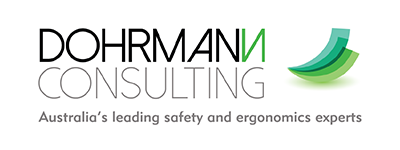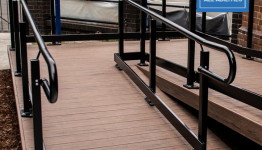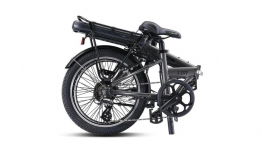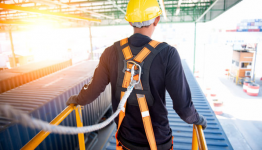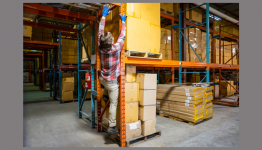10 November, 2022

Managing risks in the workplace is an important duty of any business owner or employer. A safety specialist can assist a business to identify hazards and determine how to eliminate or control risks within a workplace or public facility. Various frameworks and tools are often used to assist safety specialist identity and manage risks adequately.
Risk is a measure of the likelihood and severity of an adverse event. The adverse event could include injury or business interruption. Risk can be calculated based on likelihood and consequences. As either likelihood or severity increase, the risk becomes higher. Likelihood is the chance of something happening – consider the likelihood of suffering a concussion as a professional boxer, compared to a competitor in a paper plane flying competition. It doesn’t mean it can’t happen in either situation, however the likelihood of a concussion occurring in a boxing match is higher and therefore the risk of injury due to concussion is greater.
Consequence looks at the severity of the incident, could be a bruise, hospitalisation or death. Generally, the more impactful to the person’s life or the more severe the result, the higher the risk caused from its occurrence. Consequence doesn’t always relate to personal injury or loss, it can also include business interruptions, economic loss, impact to reputation or legal proceedings.
There are many ways to look at how accidents happen. One well known way is to consider James Reason’s ‘Swiss cheese model of human error of accident causation in complex systems’. This shows that between a hazard and the occurrence of loss or injury there are layers of defences. These may be controls such as barriers or procedures. The holes in the defences are the exposures to hazards, recognising that other than eliminating a risk completely no defence is definite. If the exposures coincide, that is the holes in the Swiss cheese align, then an incident occurs. If all but one aligns, we might have a near miss. Often you will hear about the importance of reporting near misses – this is so a careful examination of the holes in the defences can be examined and is just as important to injury prevention as reporting incidents.
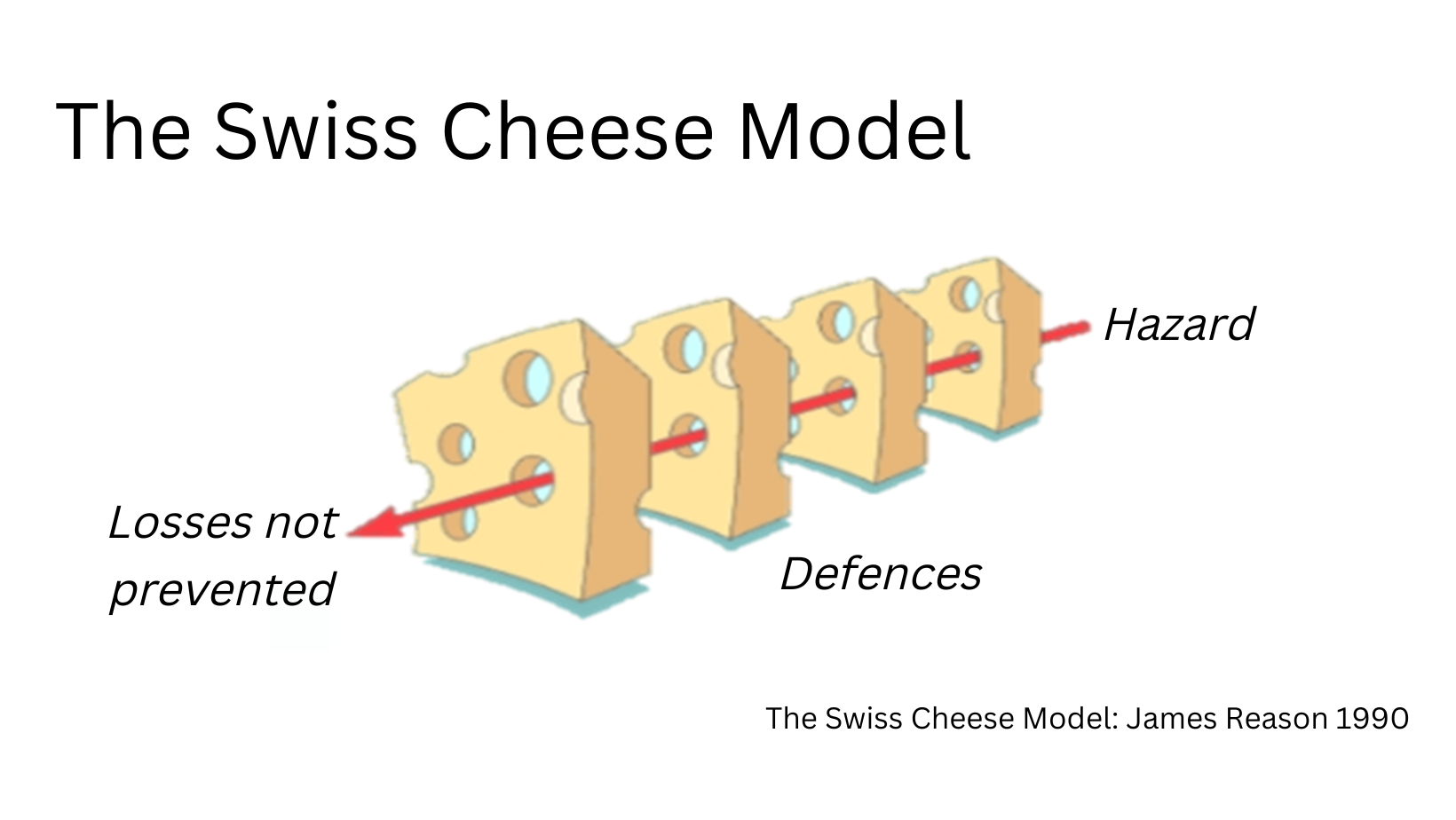
A risk assessment is an important process to identify hazards and likelihood of occurrence to classify the risk level. It considers what hazards currently exist or may appear in the future. It includes workplace hazards that can harm employees and others, such as visitors.
A risk assessment matrix is often used to determine the level of risk involved for each hazard identified.
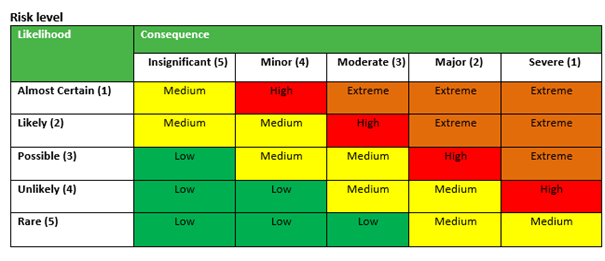
The hazard is plotted based on likelihood against consequence to determine the level of risk from low to extreme. A minor consequence is a bruise or a moderate laceration requiring hospital treatment, a major is a significant lost time injury, and severe is a fatality to one or more persons. Once the risks are identified and plotted on the risk matrix, a plan for managing these risks can be established , with management based on the level identified. All high severity consequences must be controlled regardless of likelihood, with all other risks medium and above requiring a plan.
To determine which actions will best control exposures to hazards, the principle of the hierarchy of controls can be used. There are five levels, ranked from most to least effective. Elimination is the most effective (as the hazard is completely removed). If the hazard cannot be removed, other controls must be evaluated. The least effective risk control is personal protective equipment, which relies solely on human behaviour to control the risk of injury.
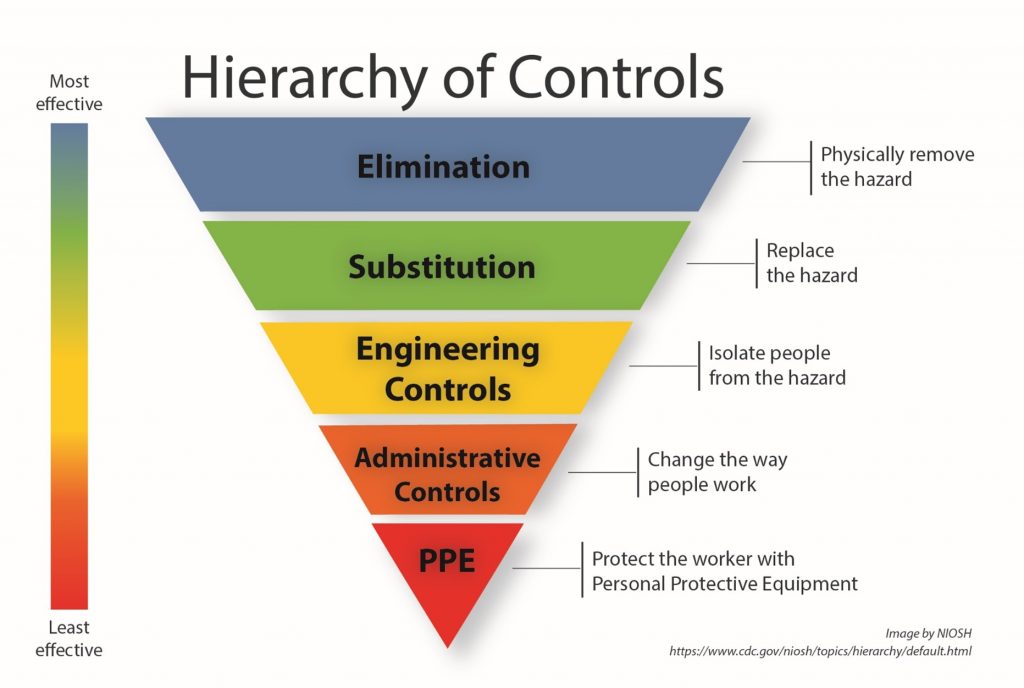
Applying the hierarchy of controls, it can be seen that incorporating safety principles in the design of a machine or process is an effective way to eliminate or control risk. By incorporating them early in the design process, the cost of implementation can be very low; adding safety actions later in the design lifecycle can be very expensive. Adequate design from the beginning has been identified to not only minimise risk but also manage costs associated with workplace safety. Costs associated with unsafe design include retrofitting, workers compensation, environmental clean-up and public liability.
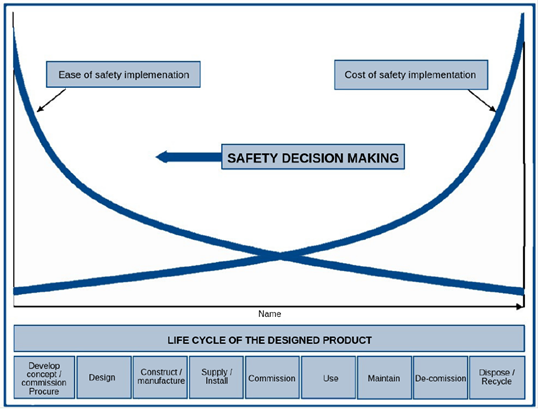
A safety specialist can assist to determine ways to eliminate hazards and control risks under the hierarchy of controls (substitution, engineering, and administrative controls). Administrative risk controls include workplace rules and safe systems of work.
A safe system of work is a documented set of procedures that describes a task and the means to perform the task safely. It identifies hazards and risk controls, taking into account:
- Tasks
- Team
- Training
- Technique
- Tools / Equipment
- Supervision
- Work environment
Formulating safe systems of work to manage and minimise a risk is a complex but vital process, in which the level of risk is assessed against the requirements of the task and exposures to hazards.
Although all aspects of a system of work need to be incorporated, training is an important aspect that is often missed, under prepared, or delayed. We often see cases when training systems are established but inadequately implemented, or important aspects are missed. This is a mistake that can lead to serious consequences of loss, death, economic loss, or legal proceedings.
Our safety experts and risk assessment team have observed a myriad of hazards, including many that have resulted in incidents from insignificant to severe consequences.
Engage one of our experts to provide advice on how to manage and minimise risk in your workplace.
You may also be interested in the following information and resources:
